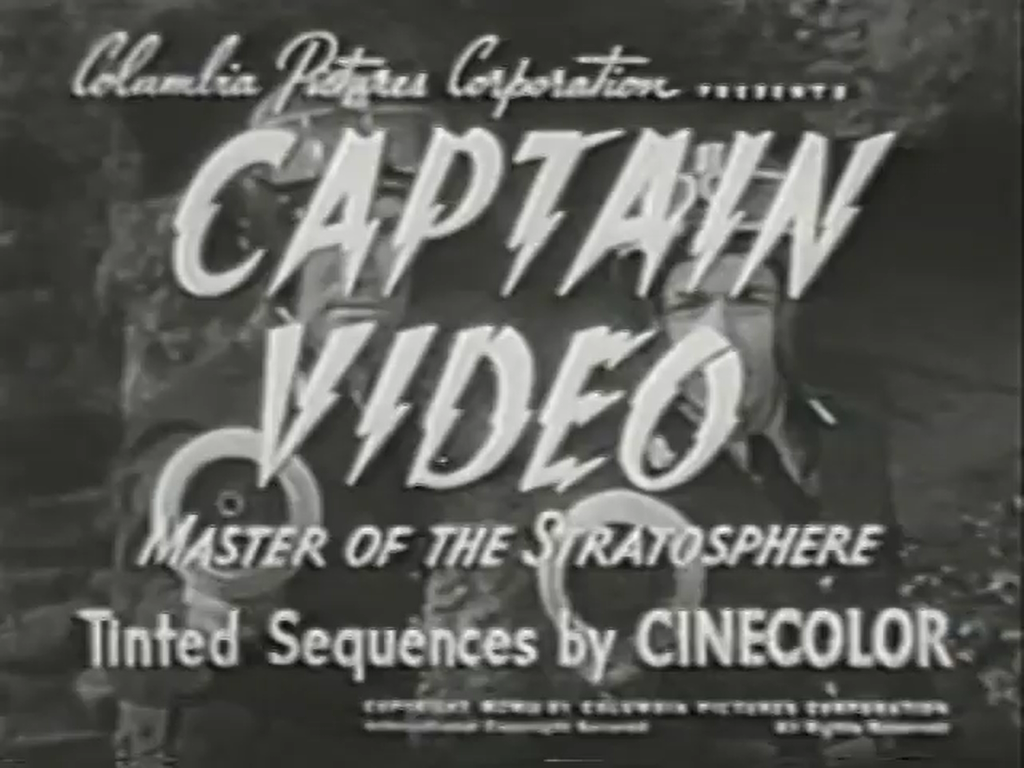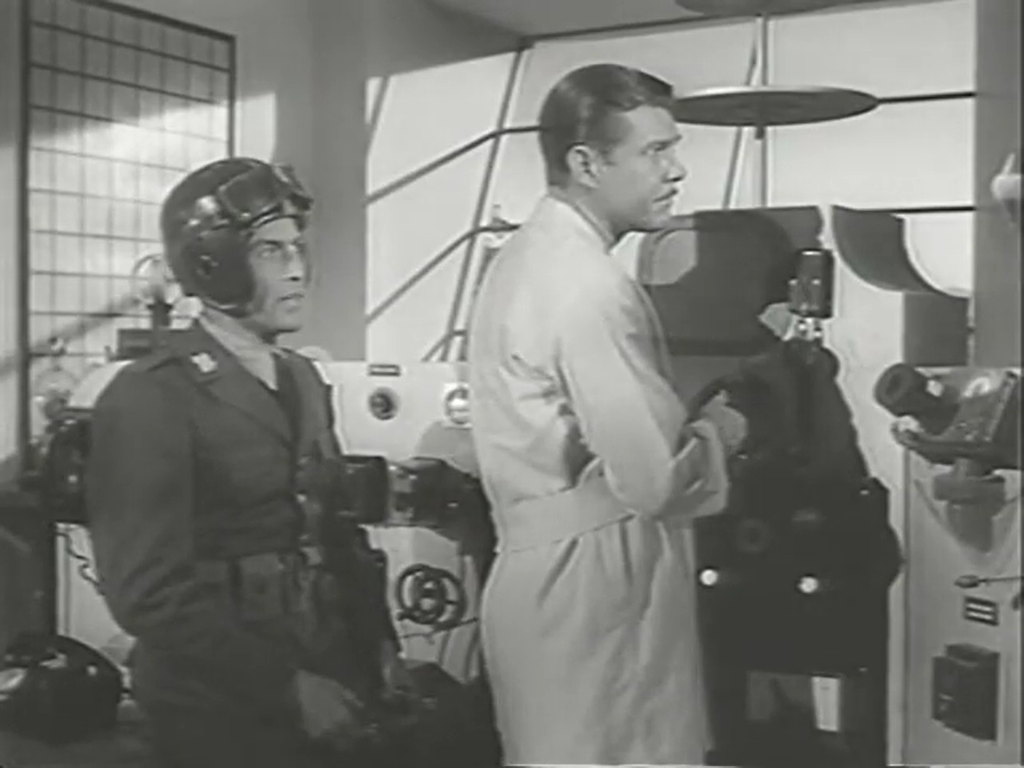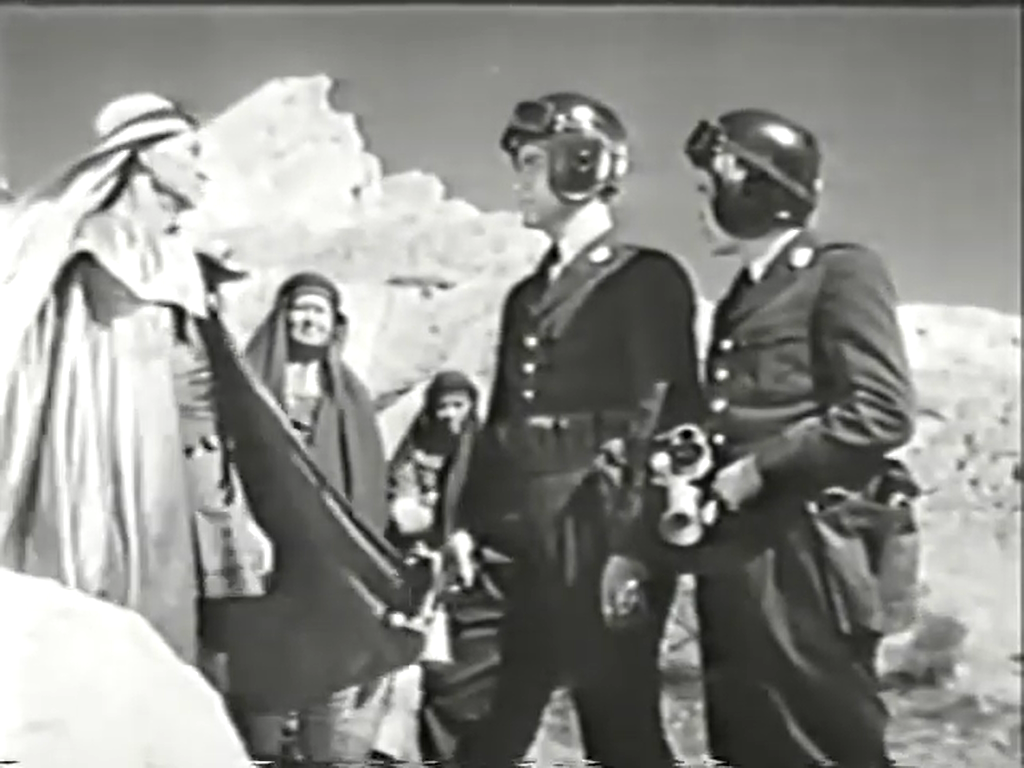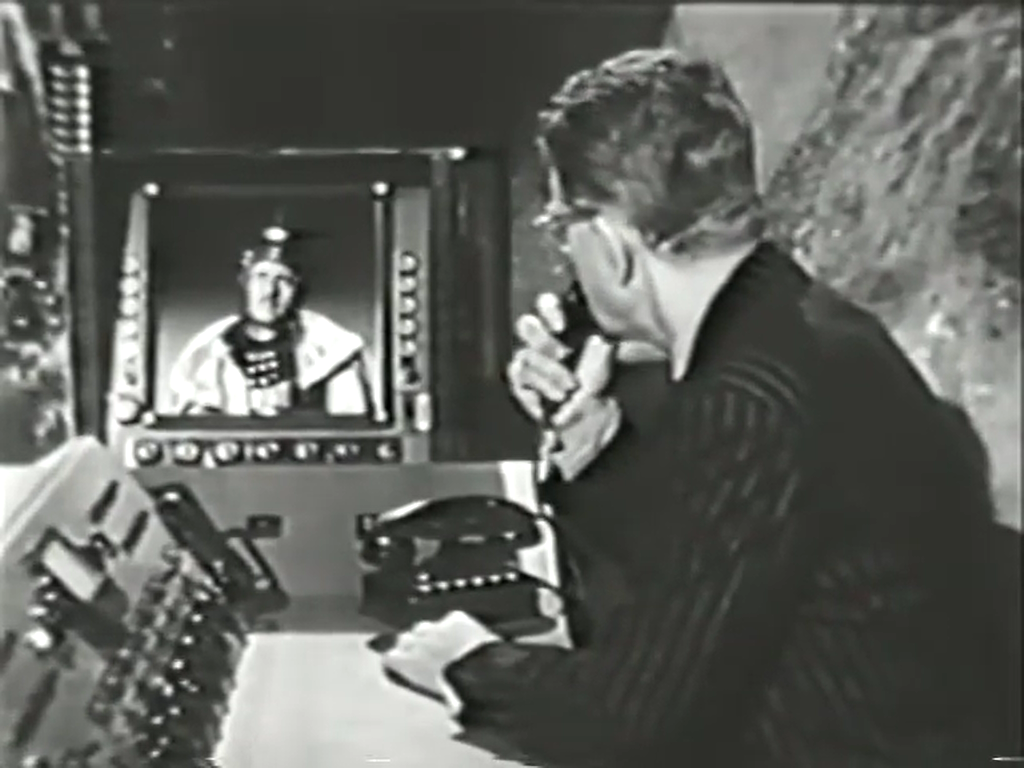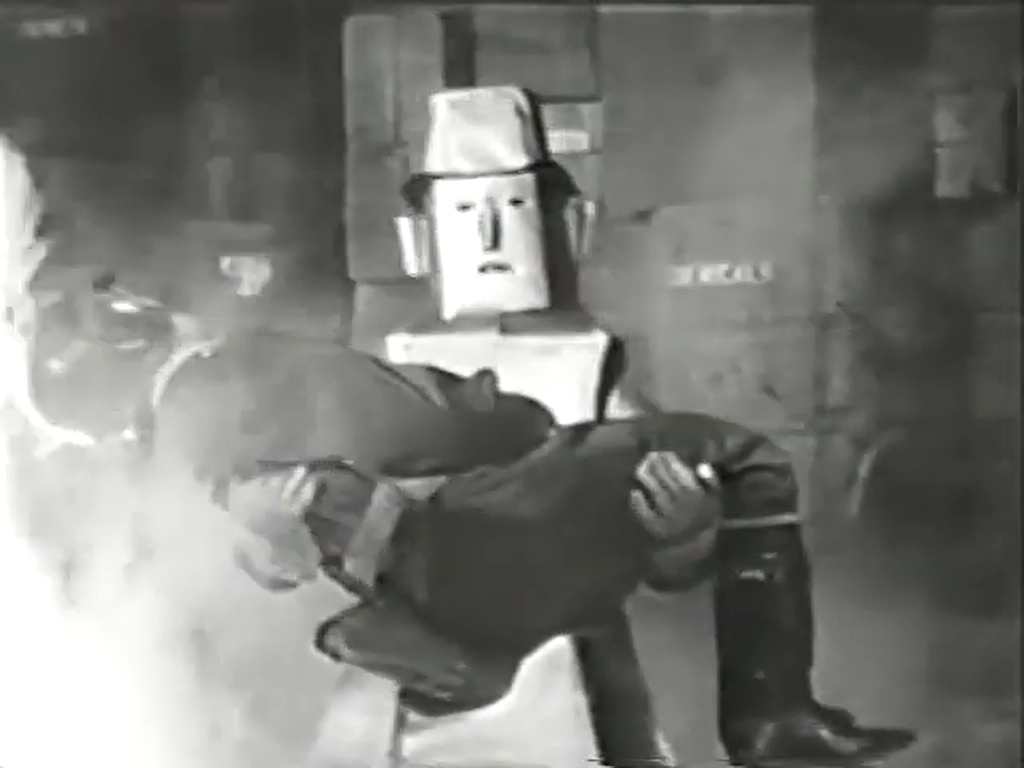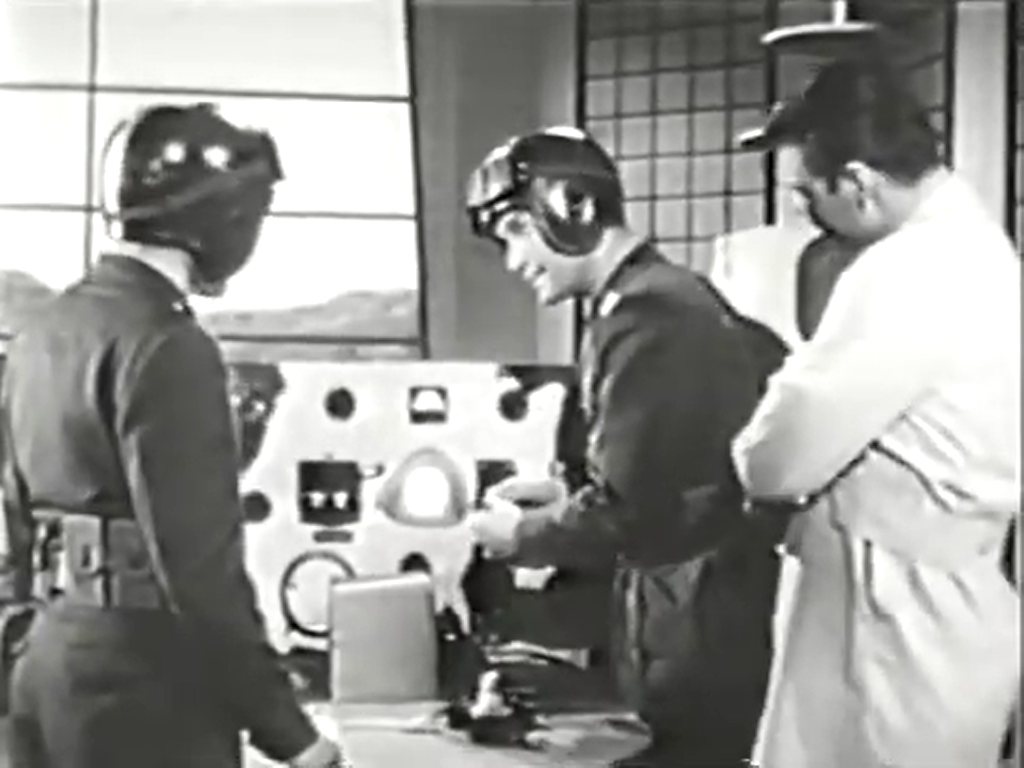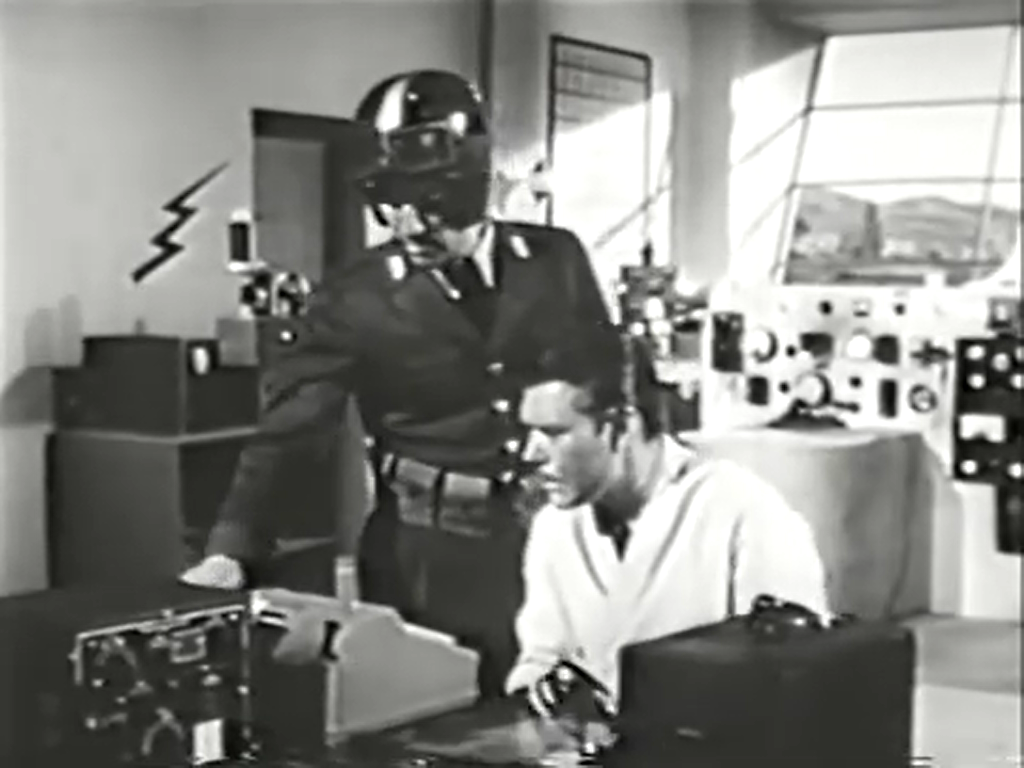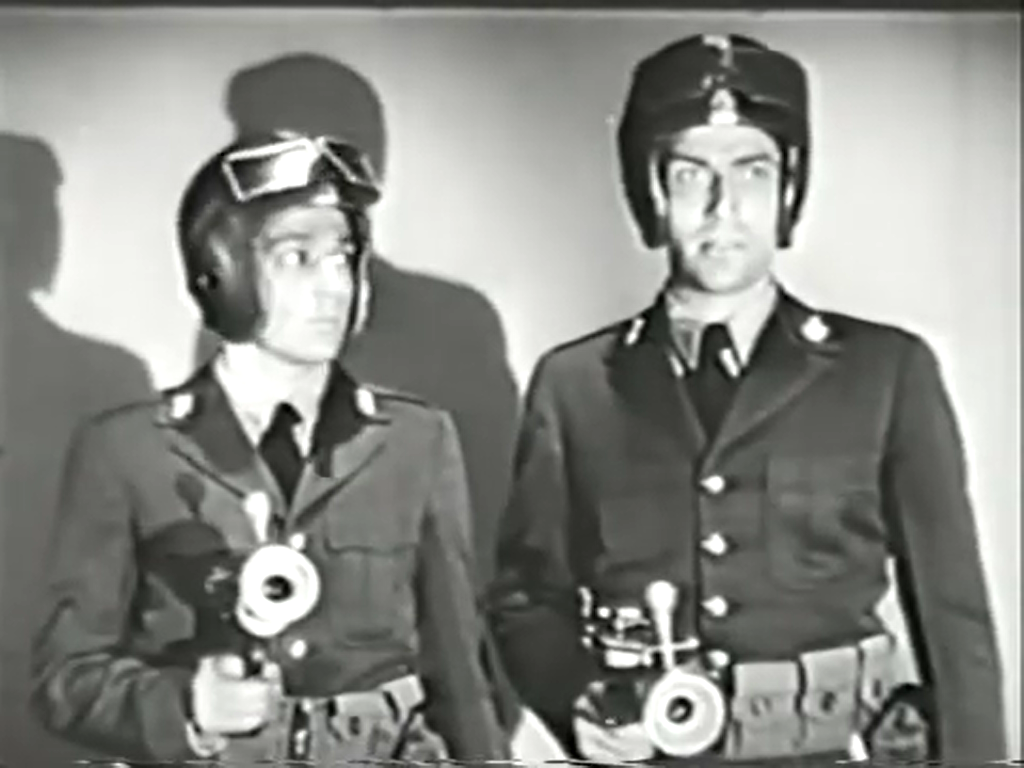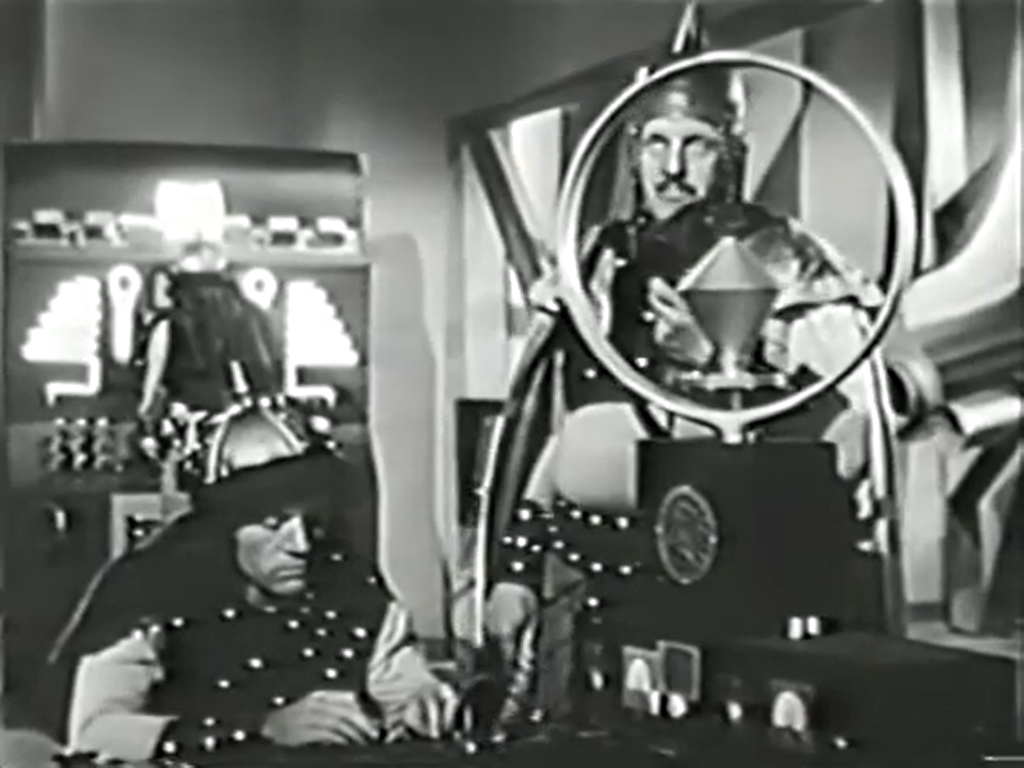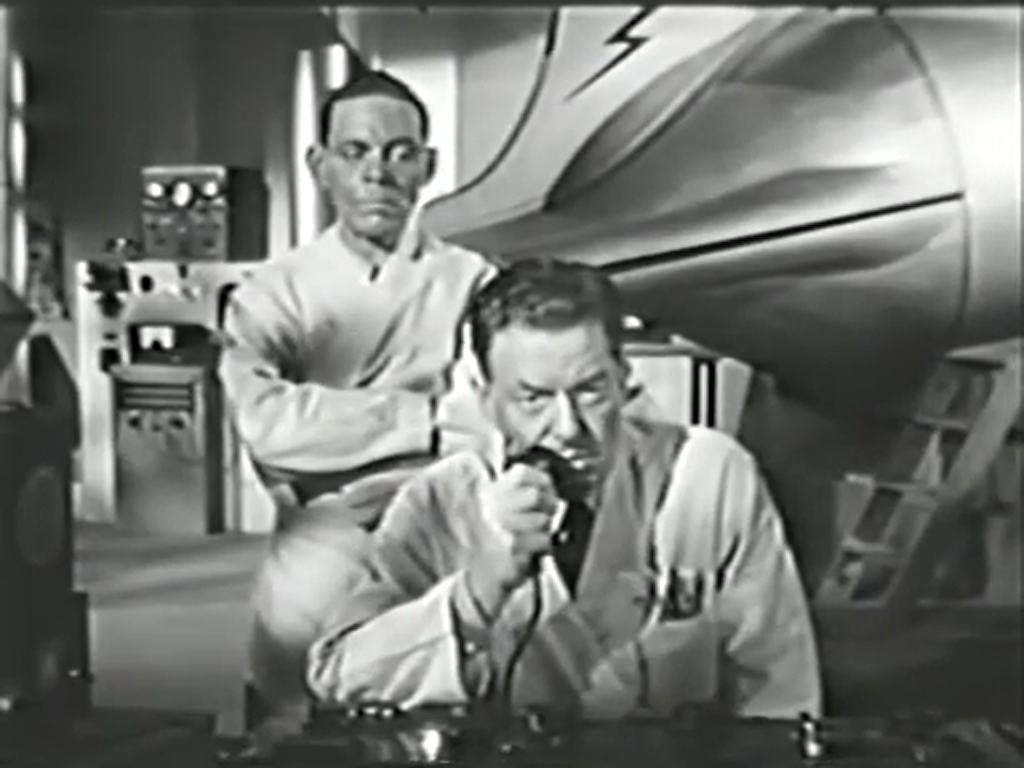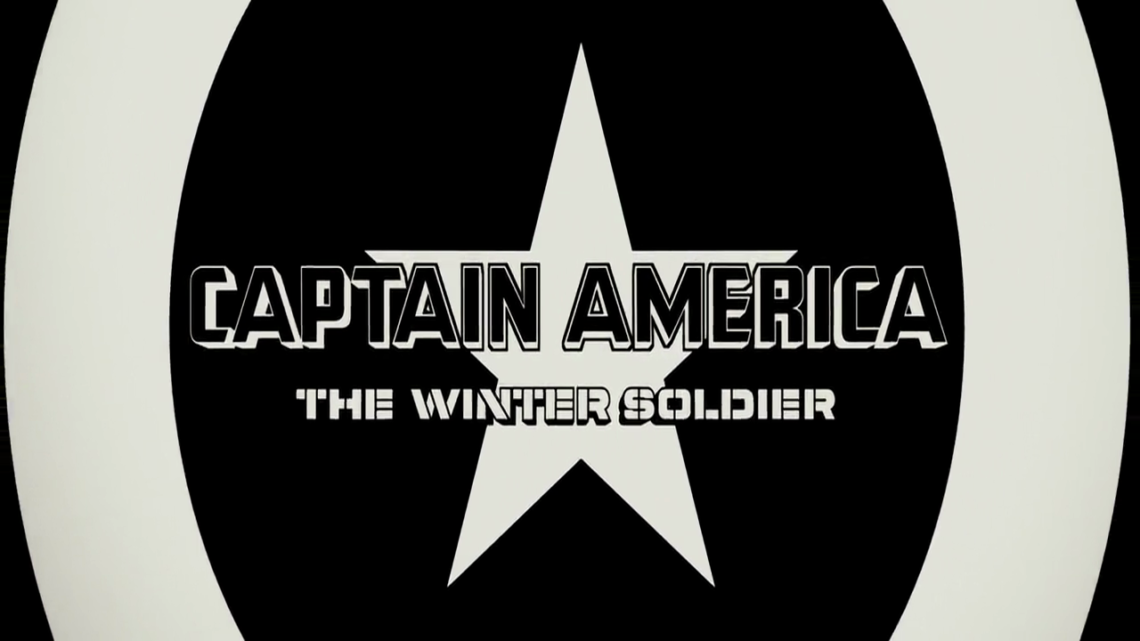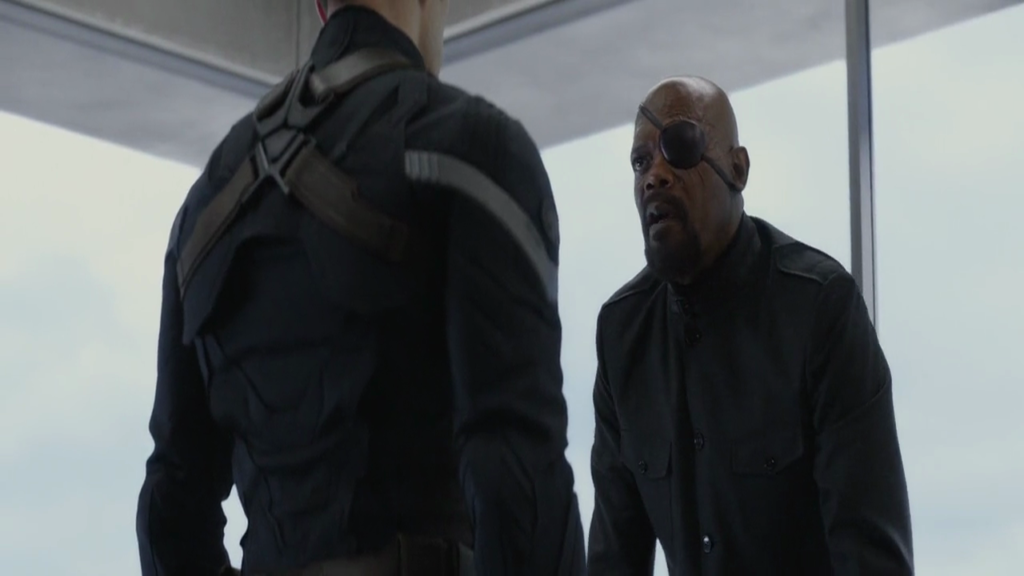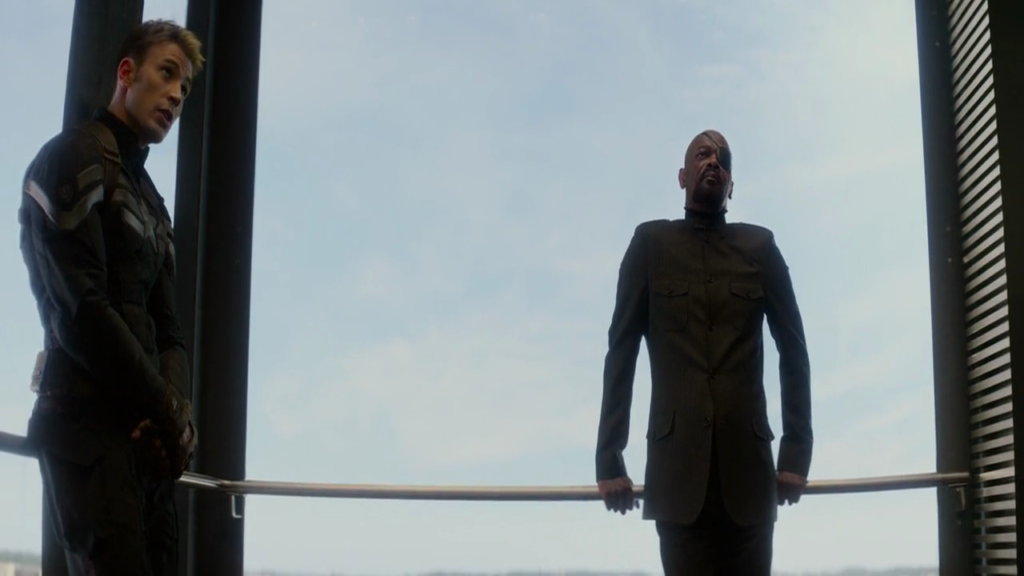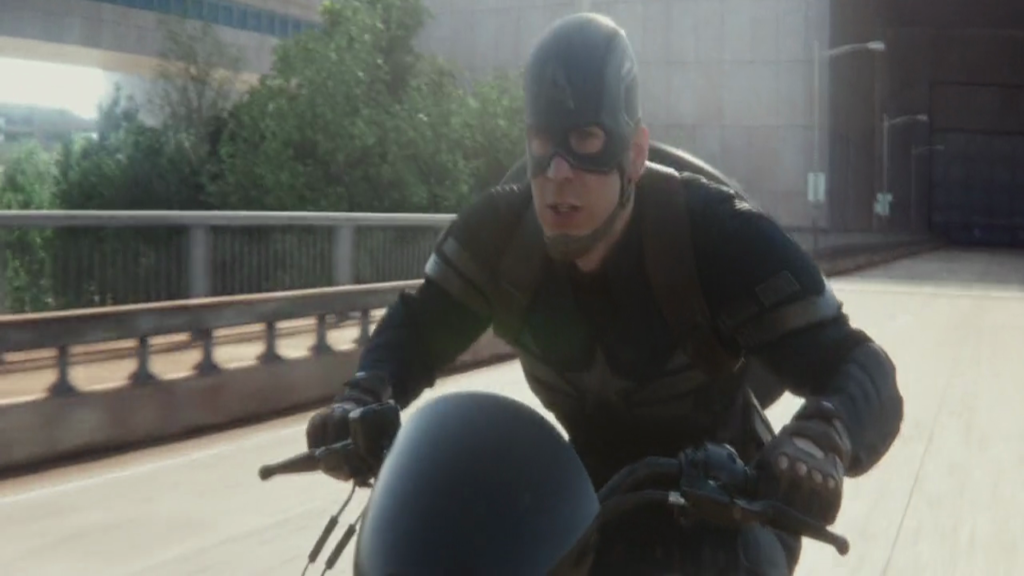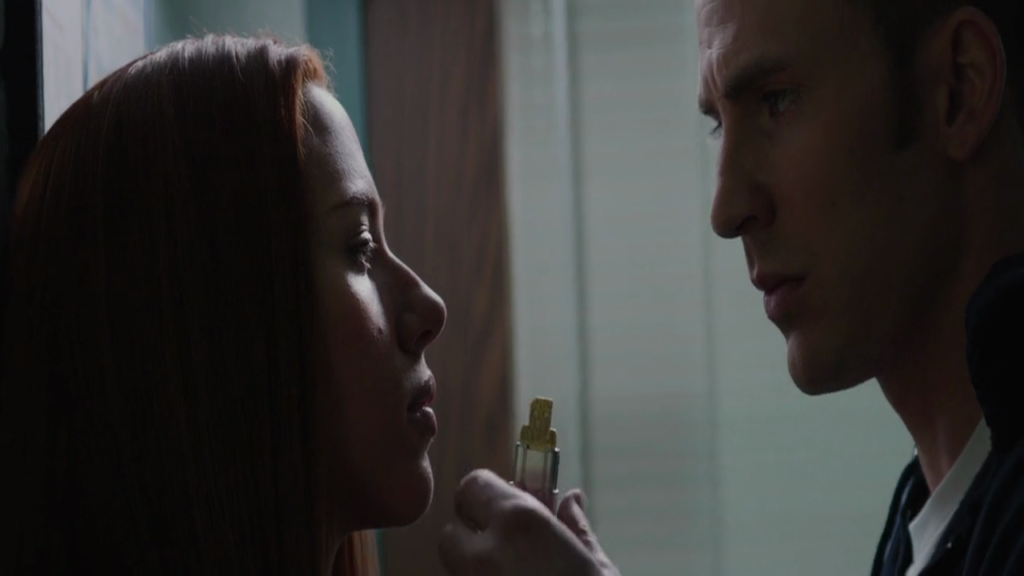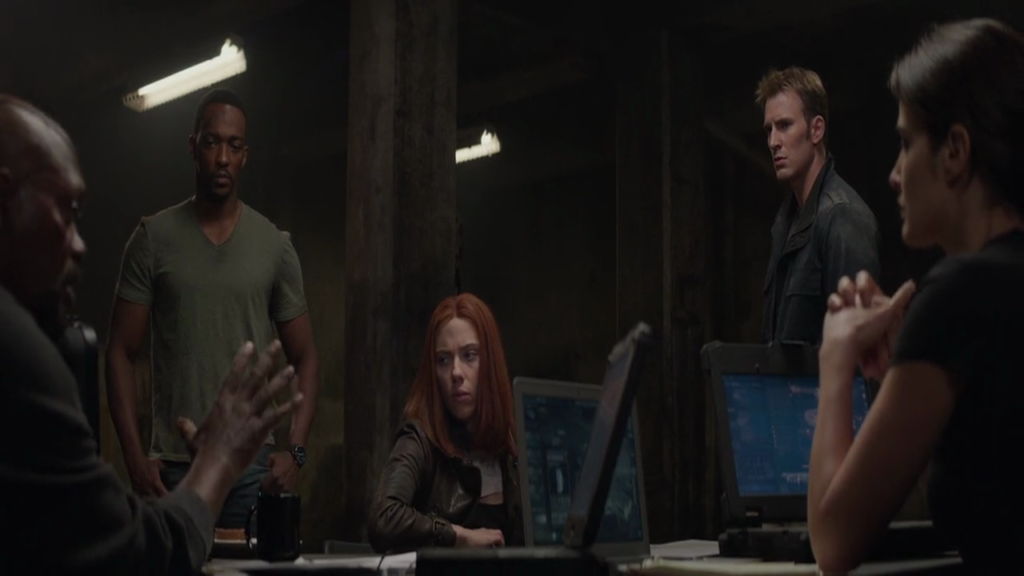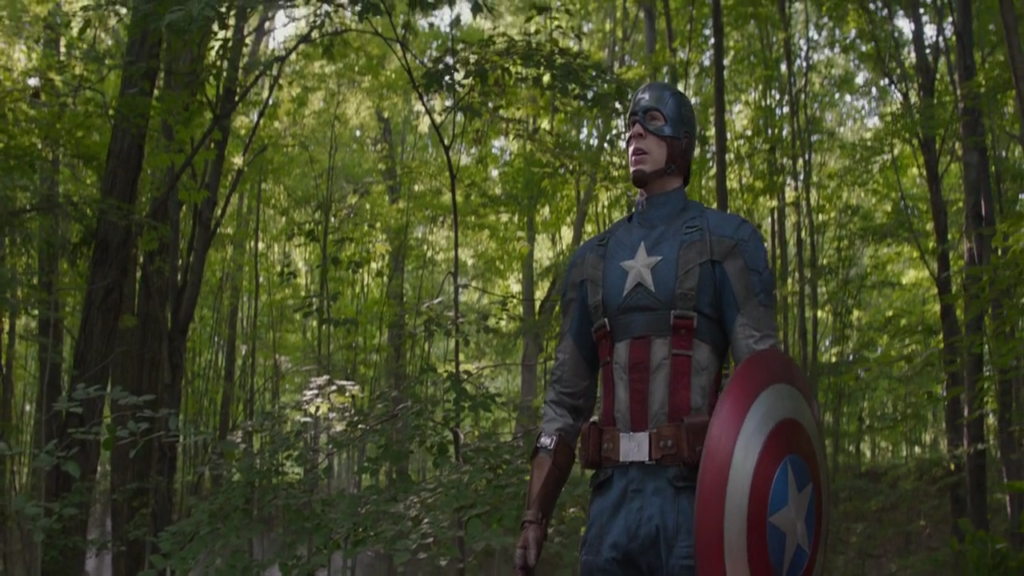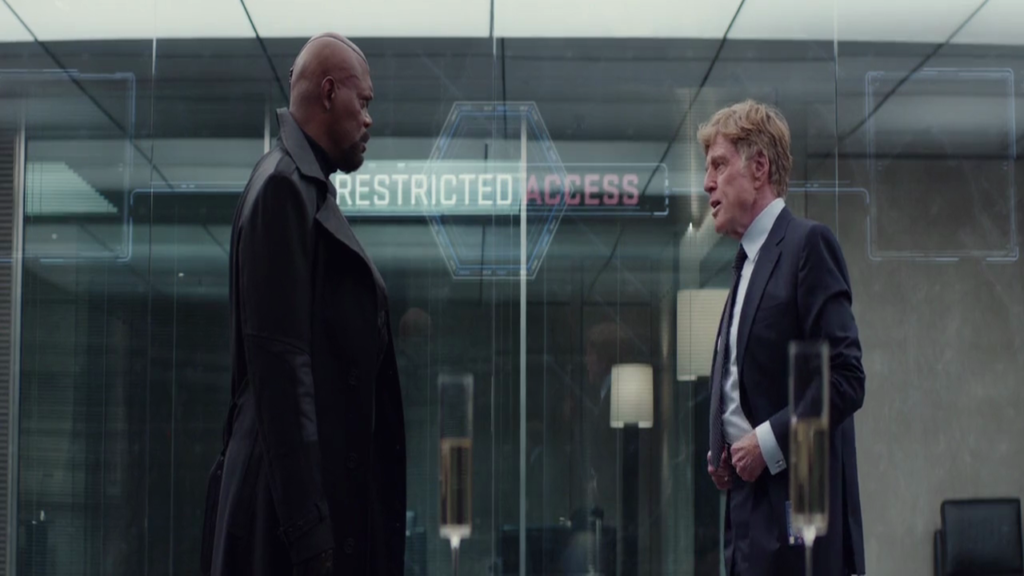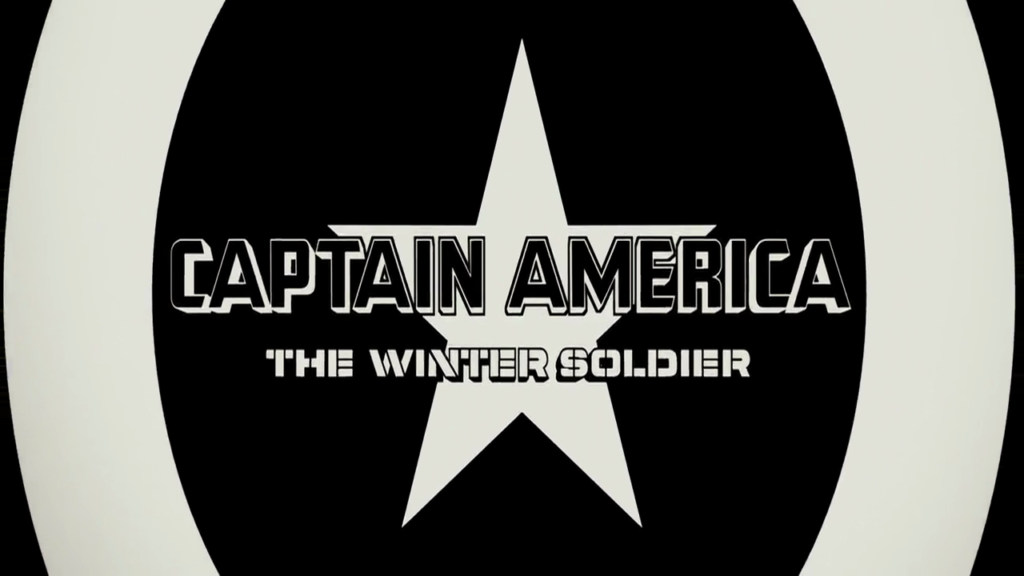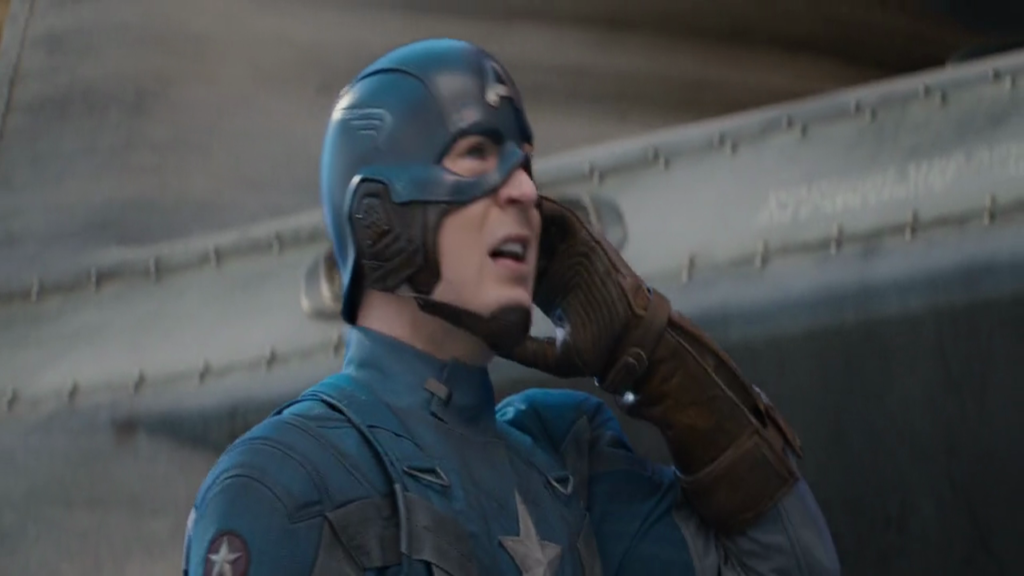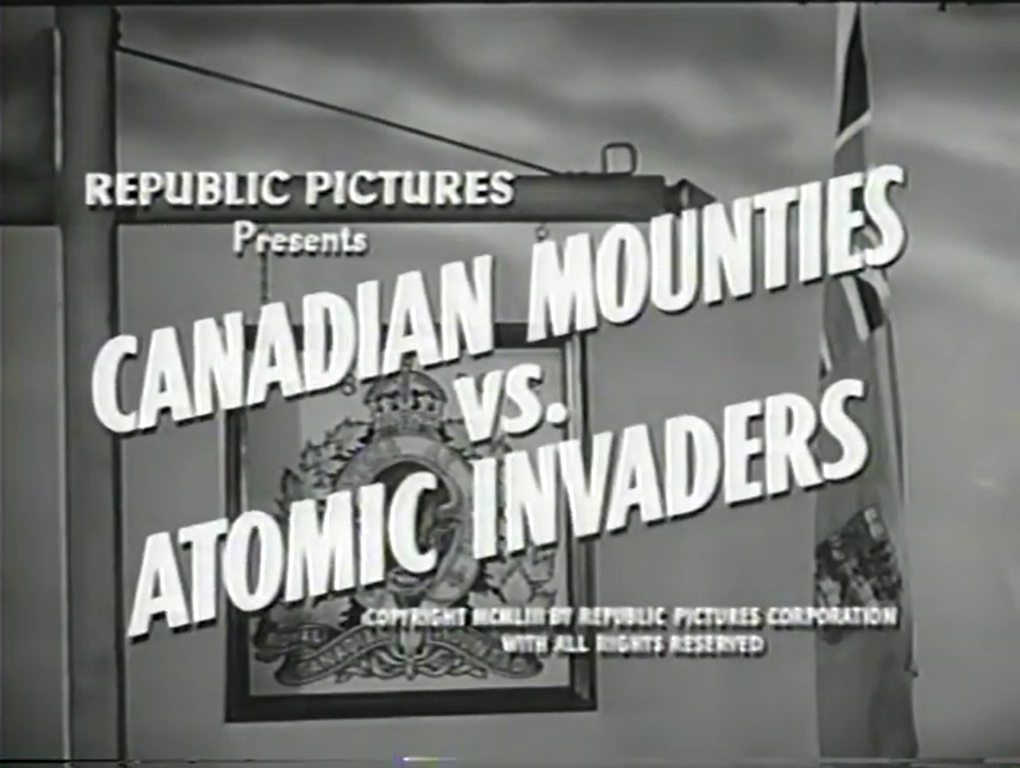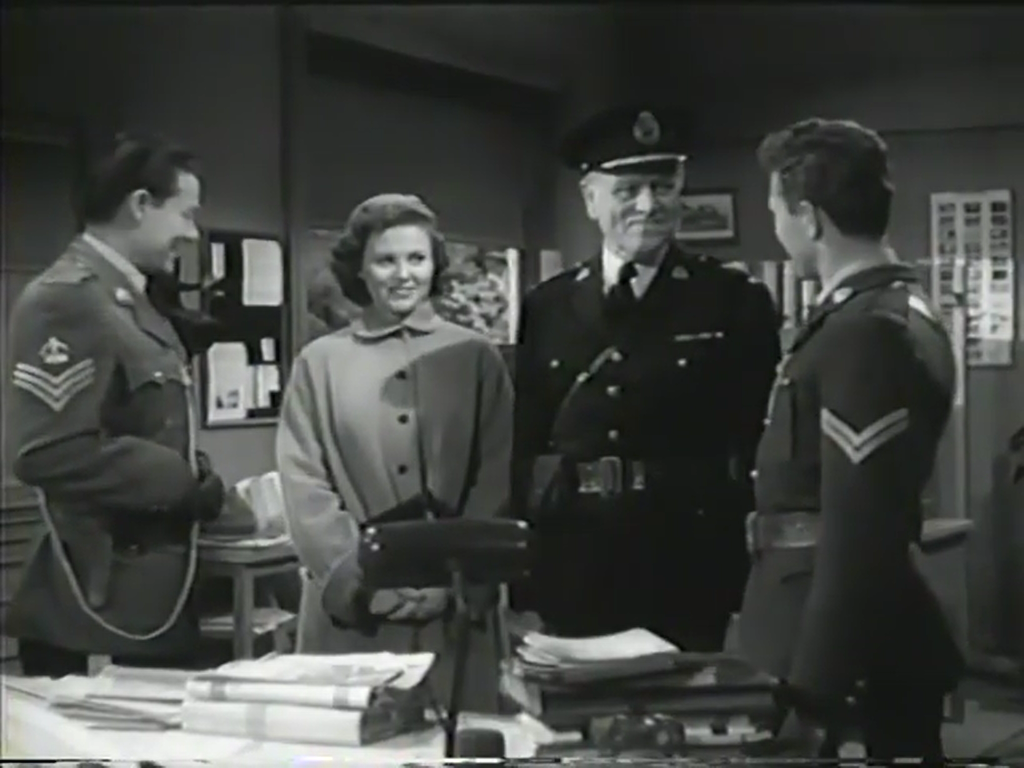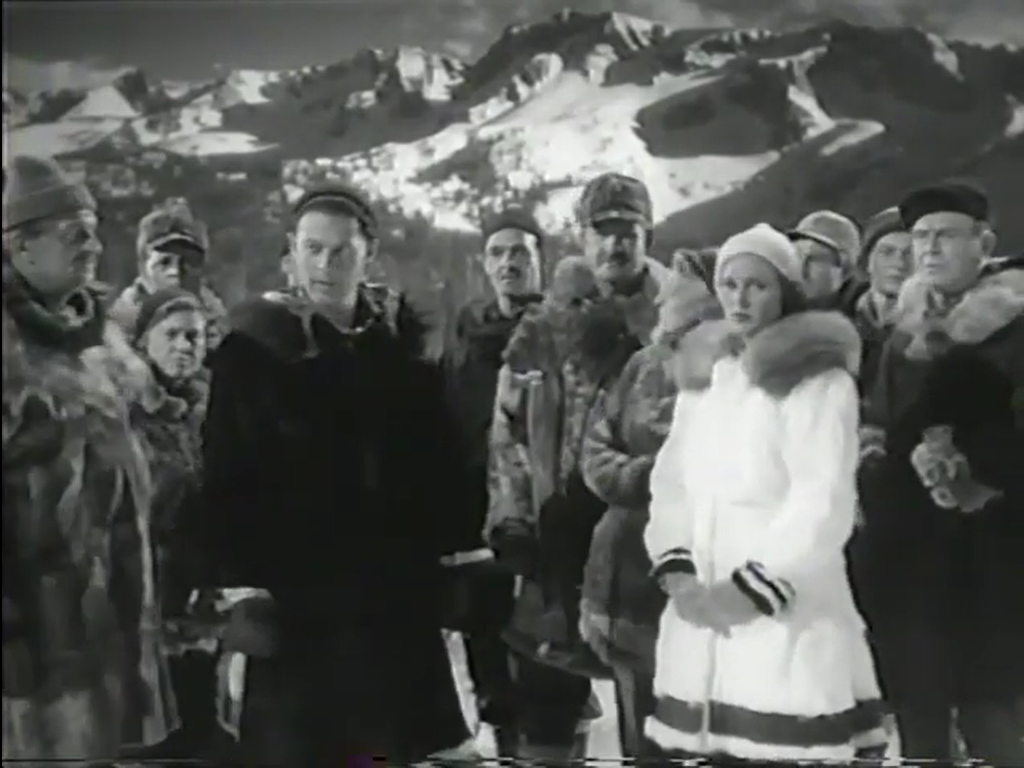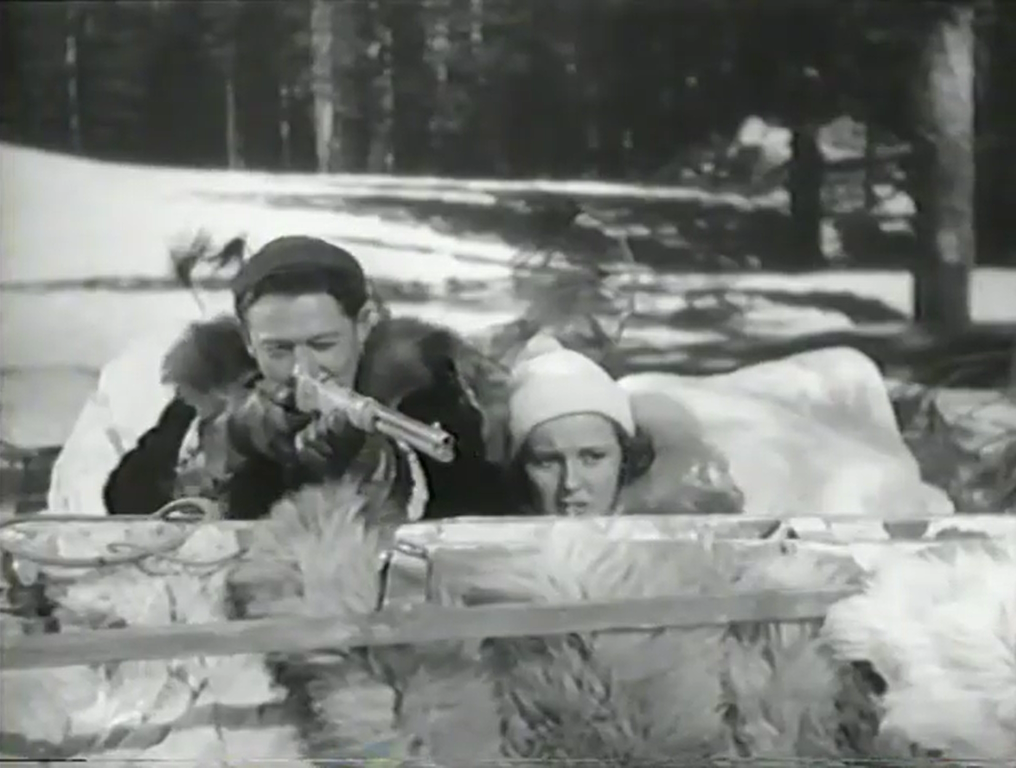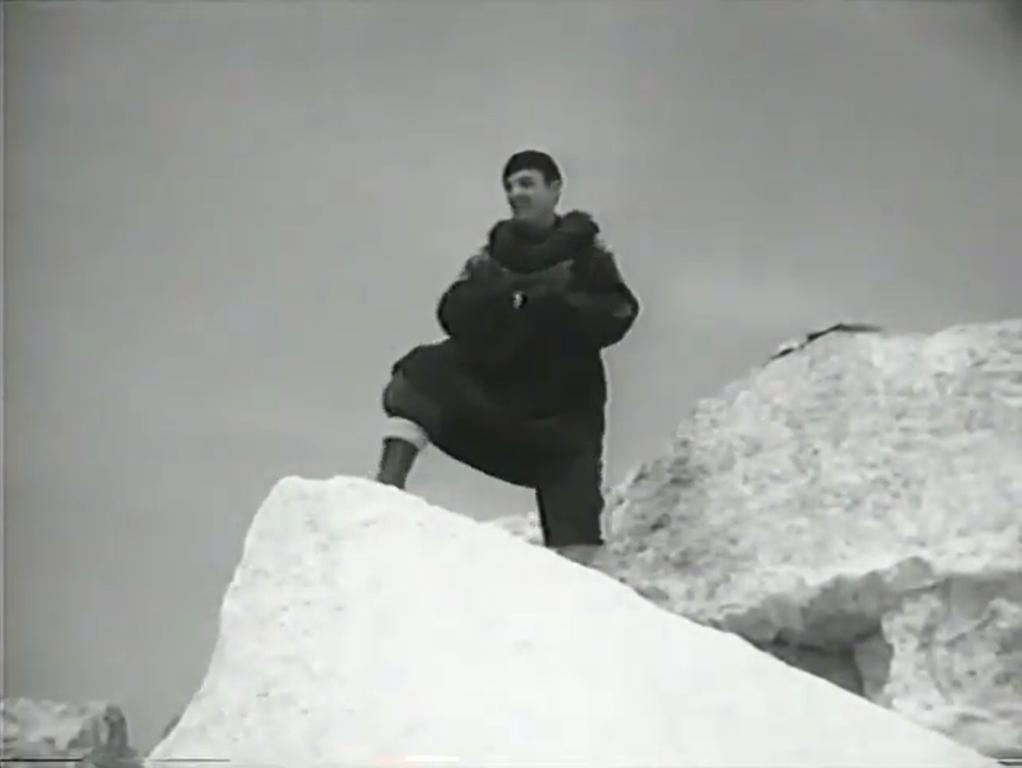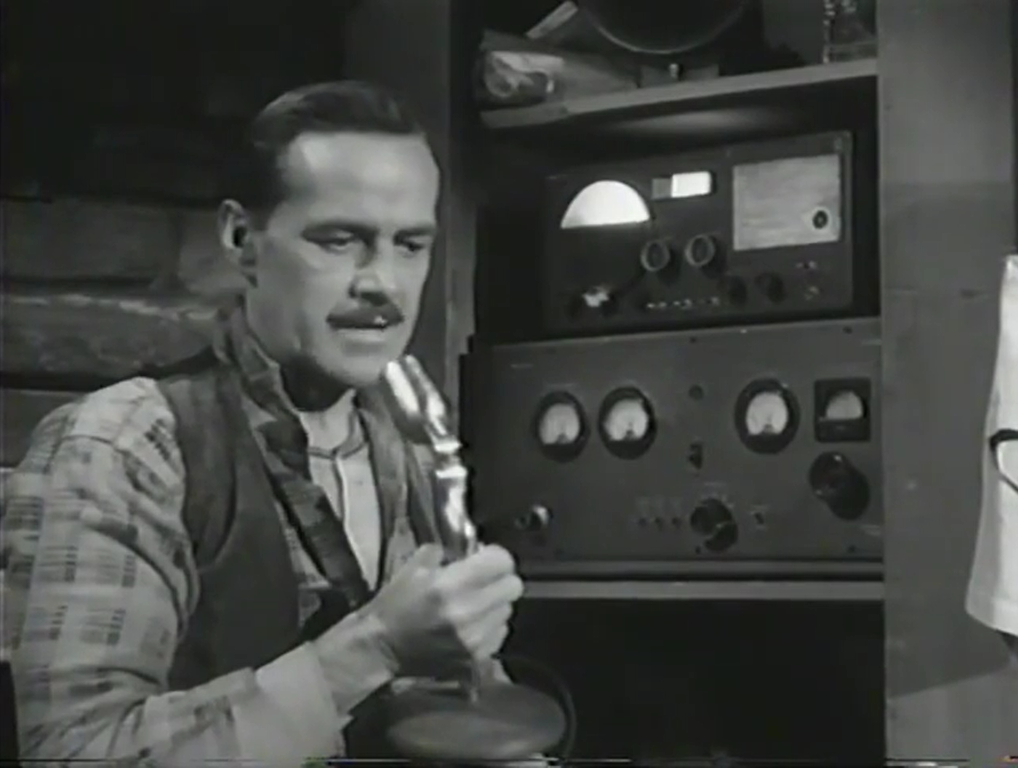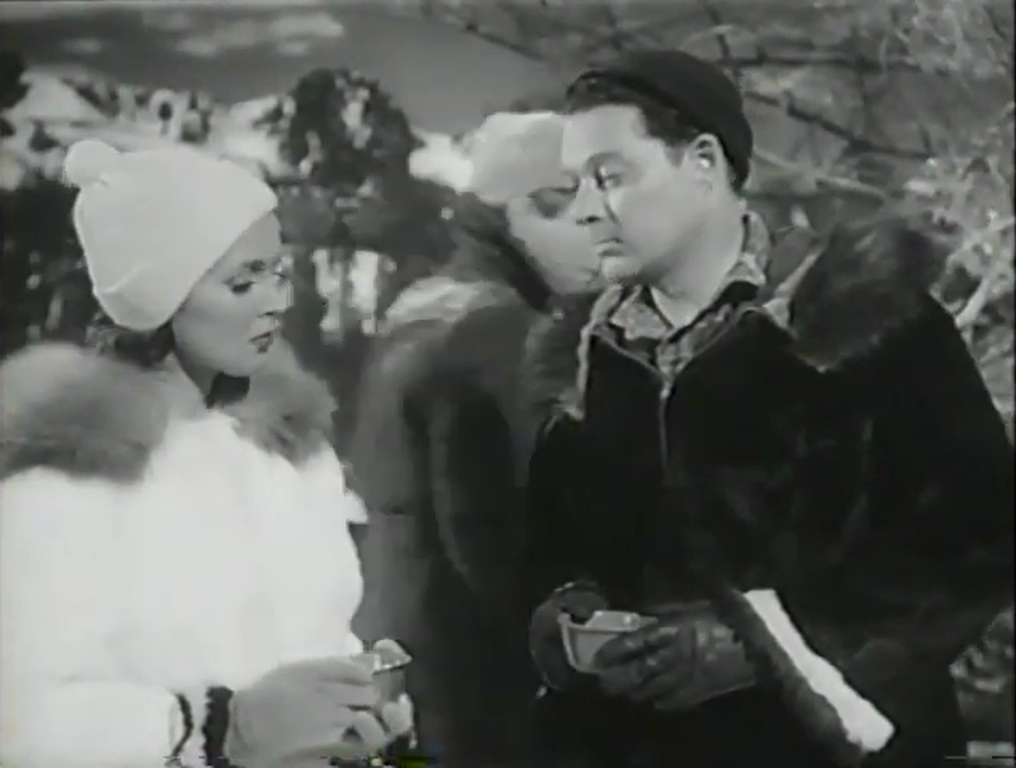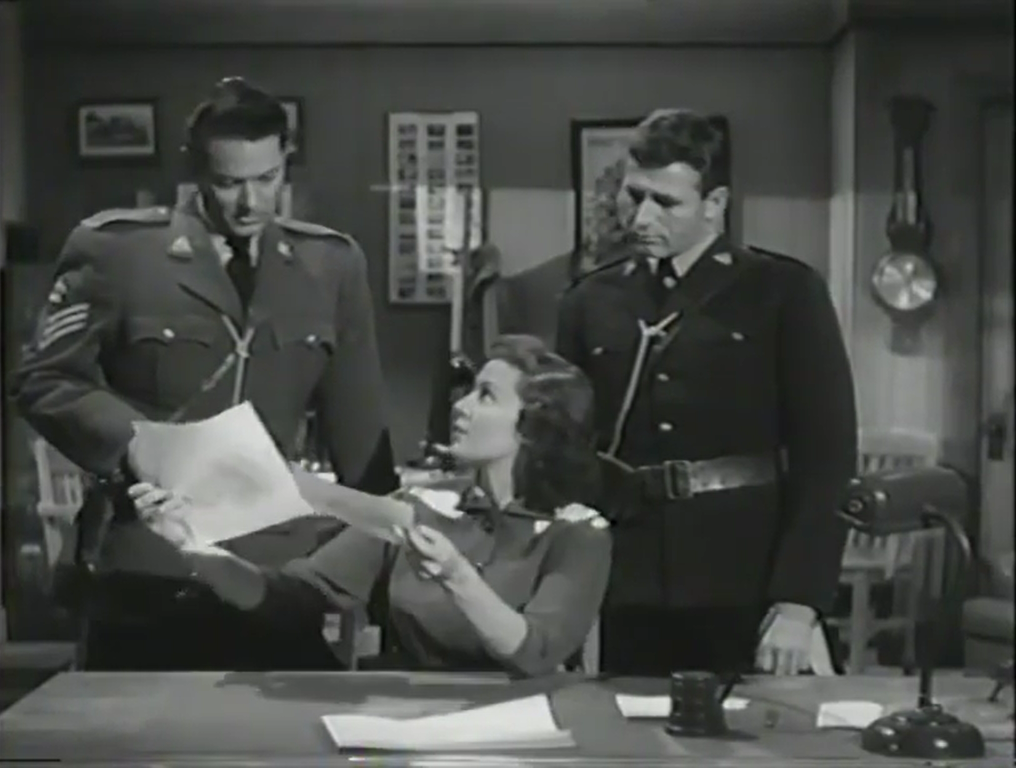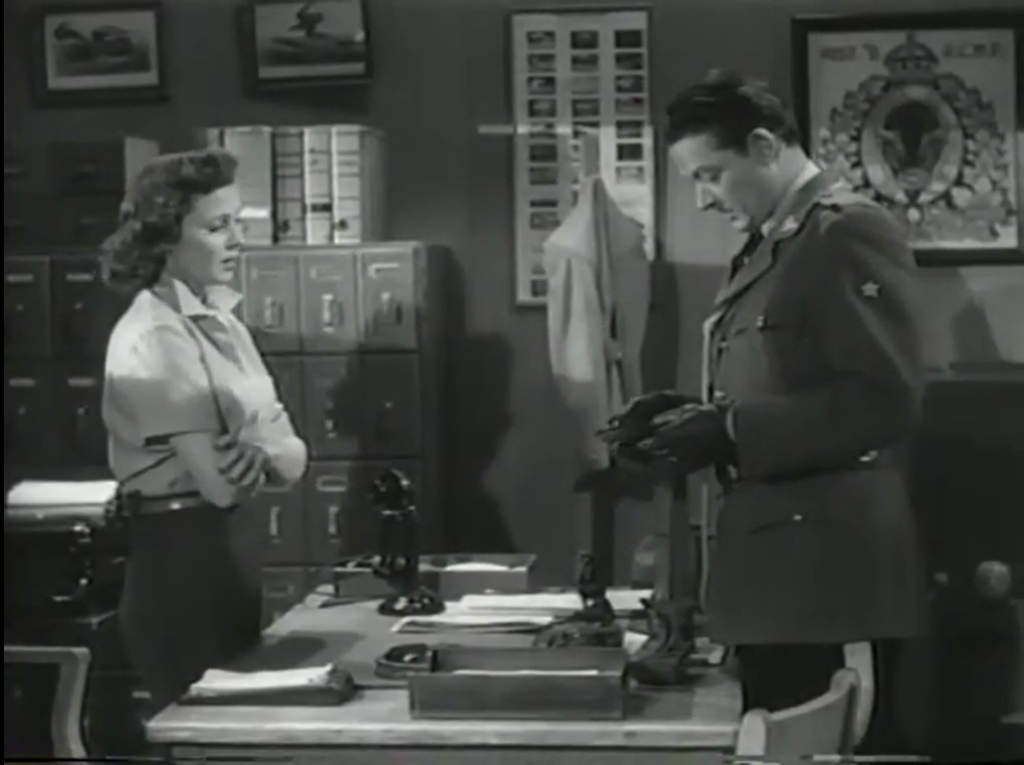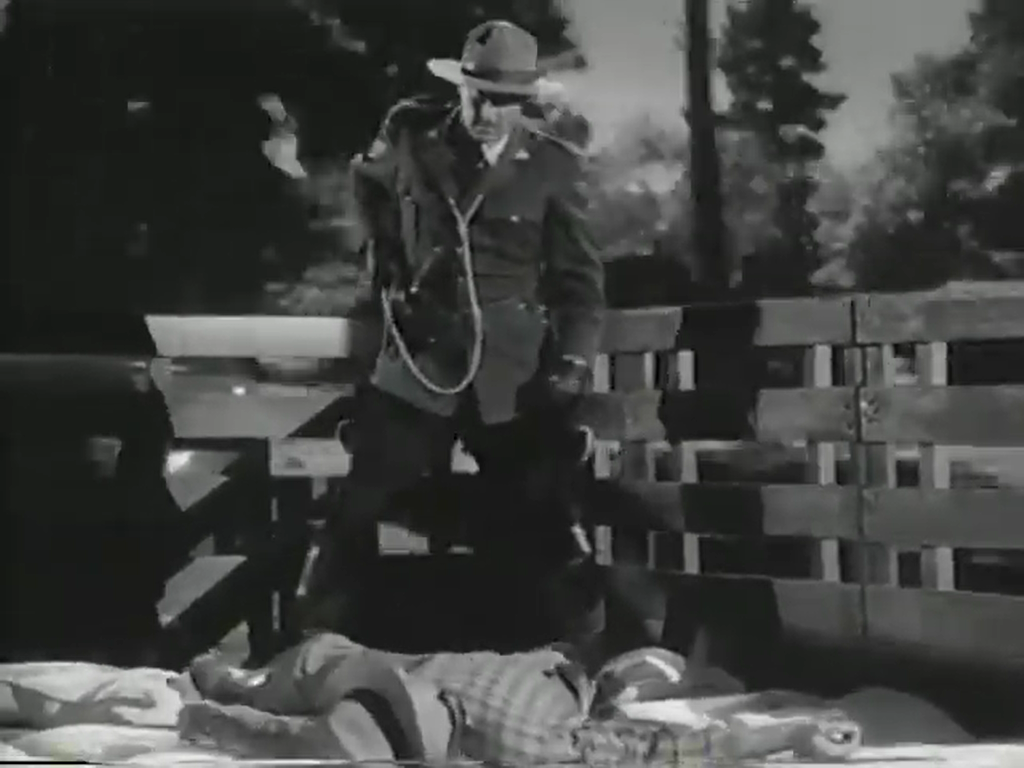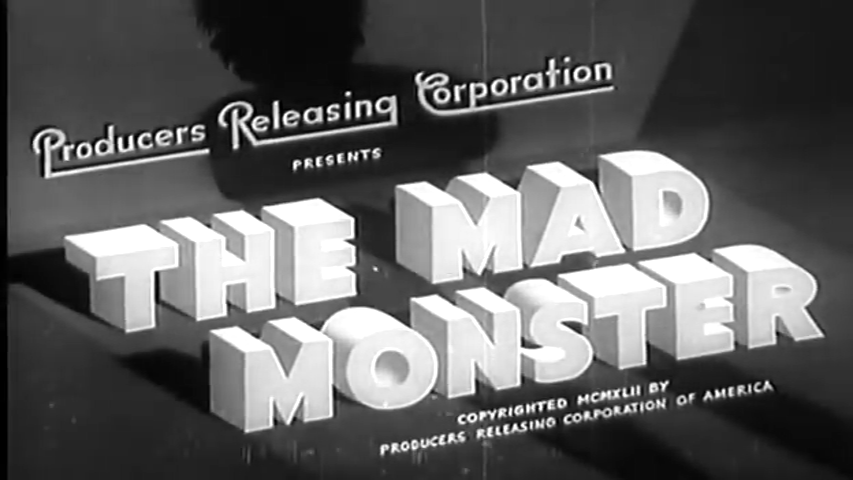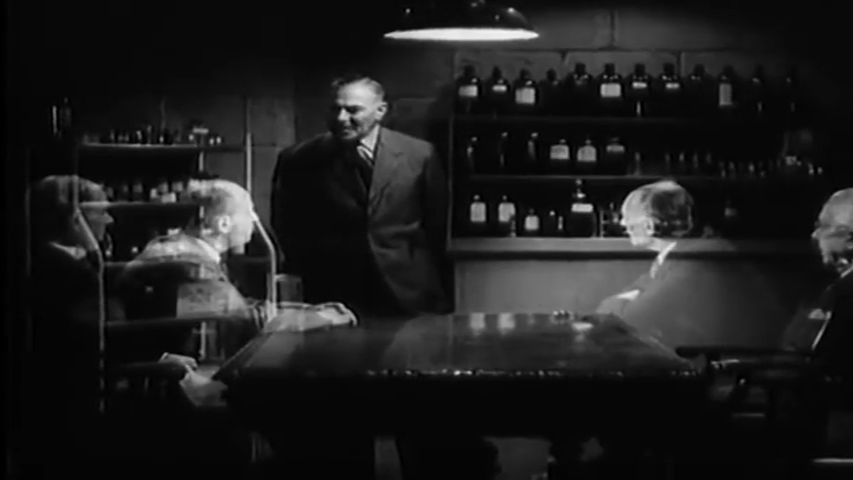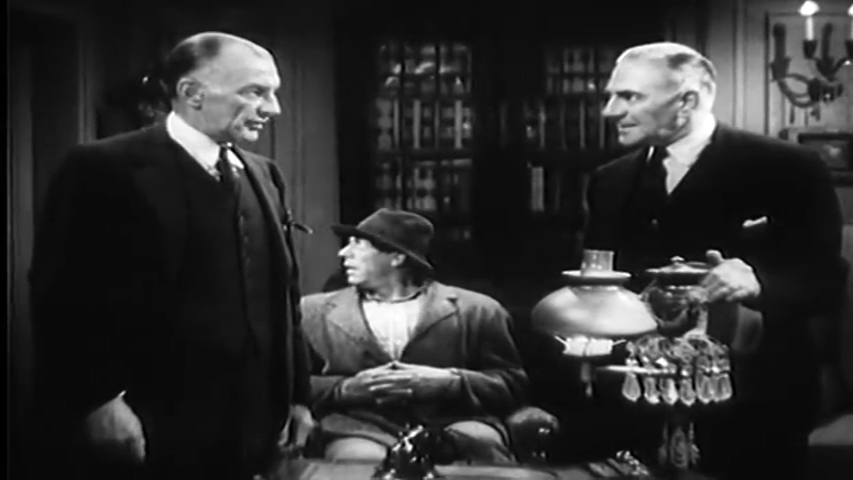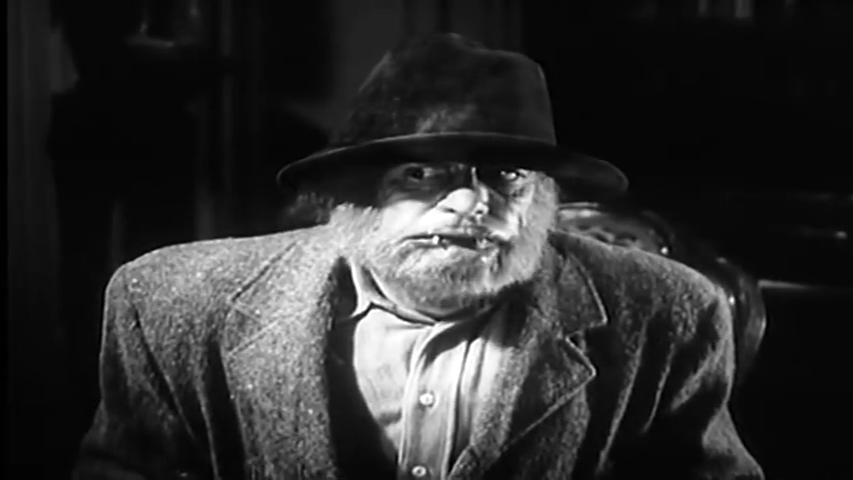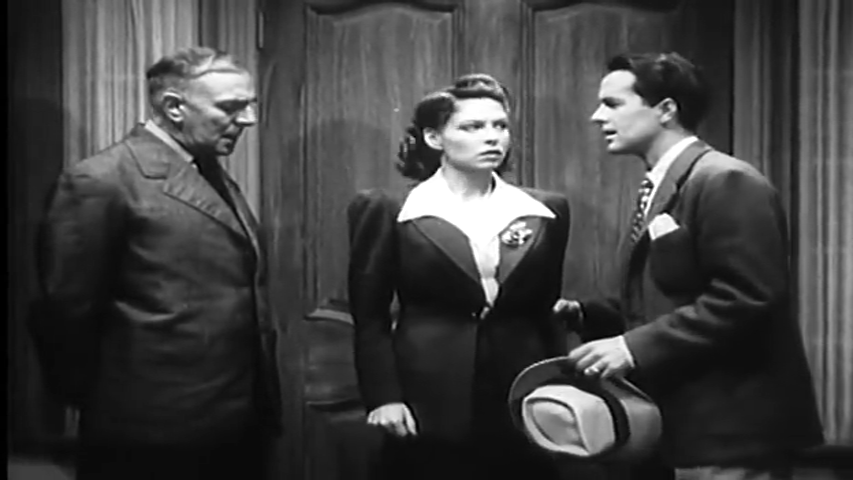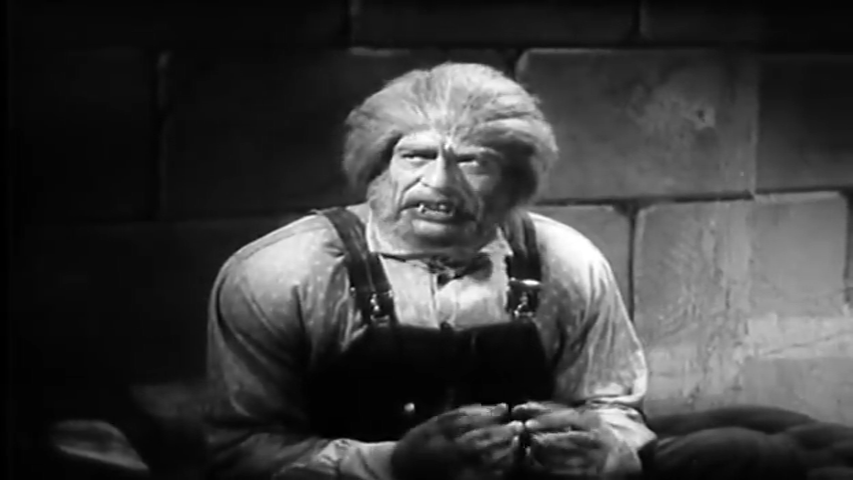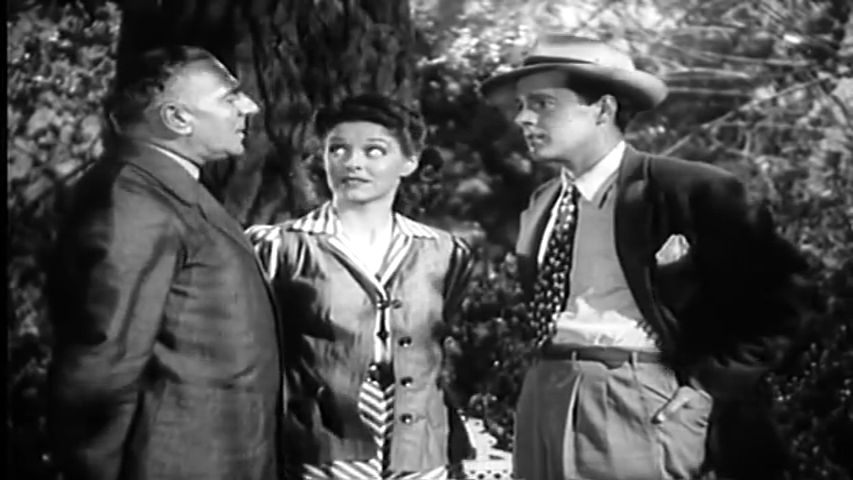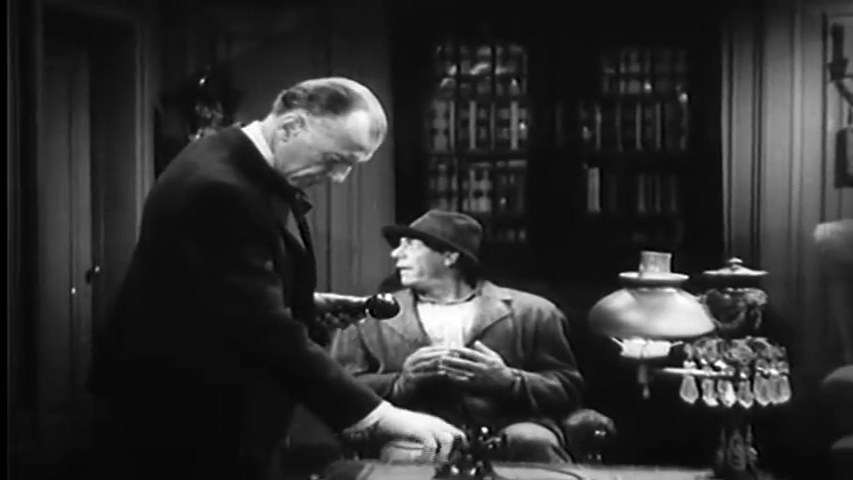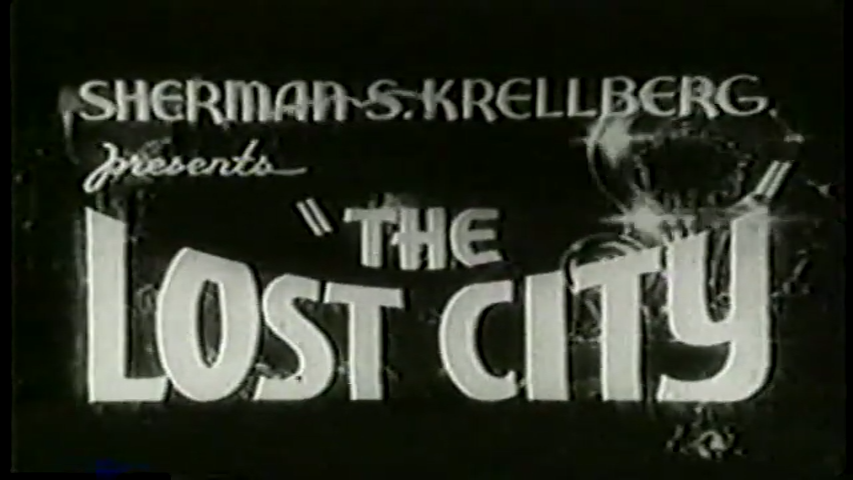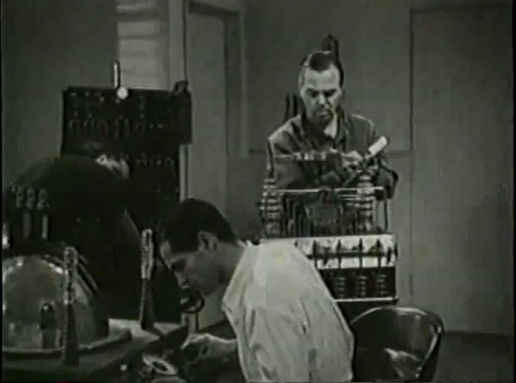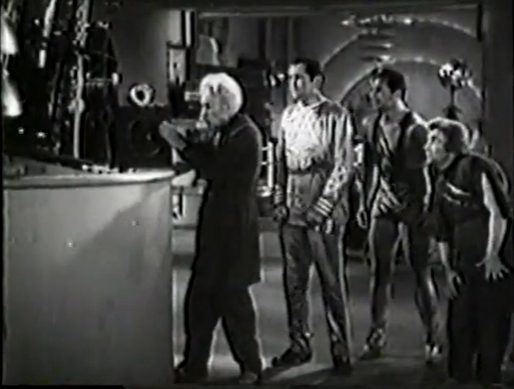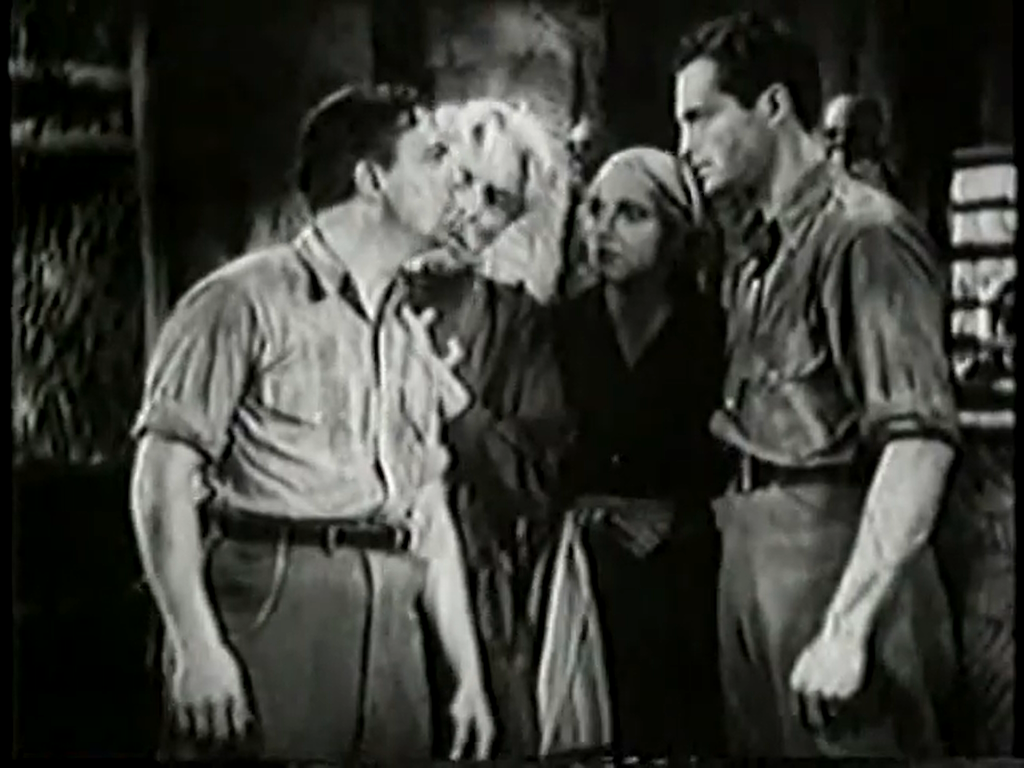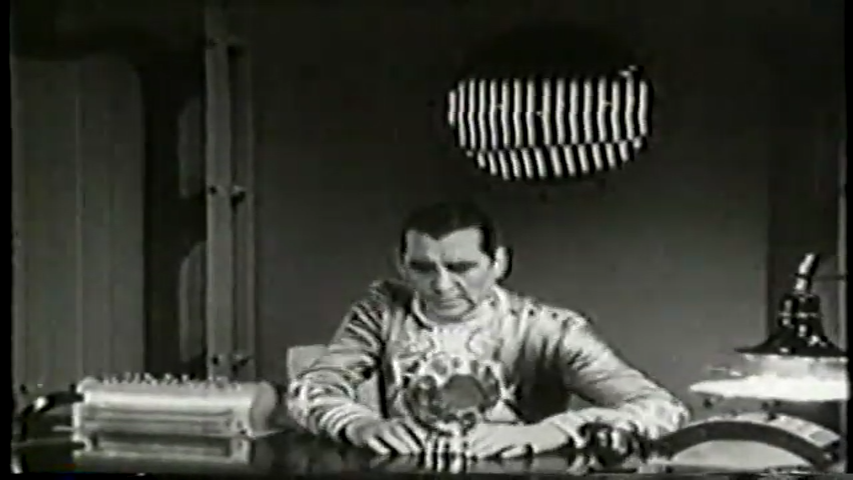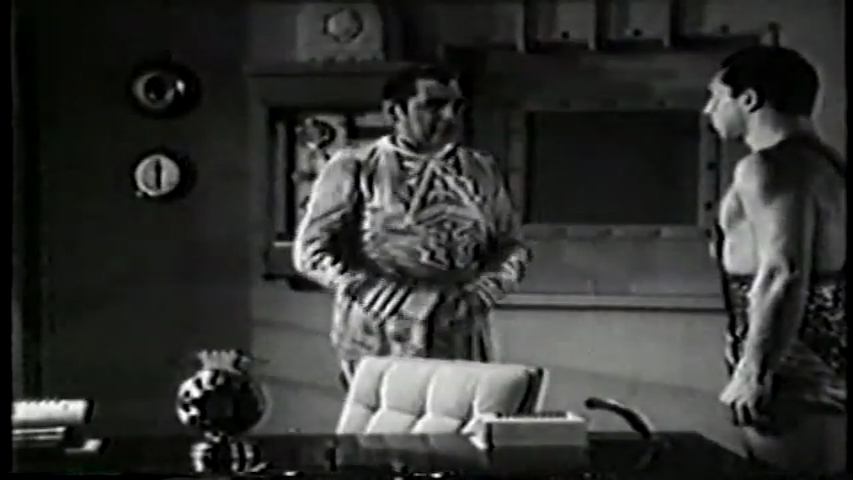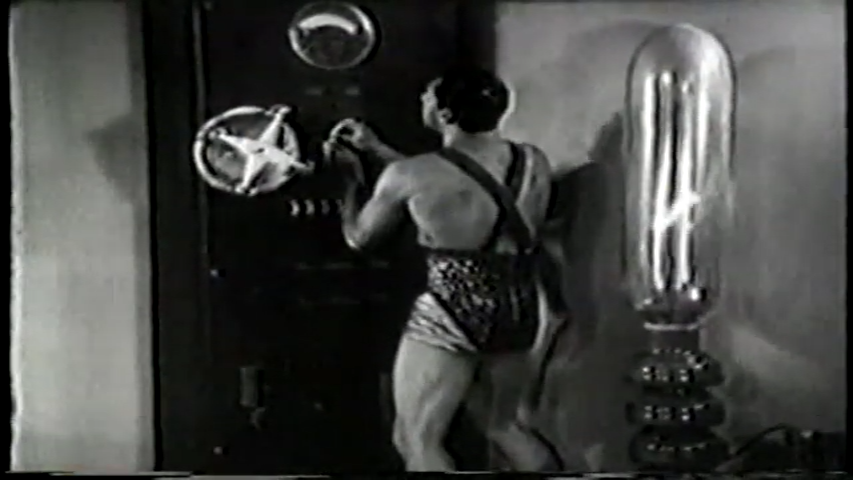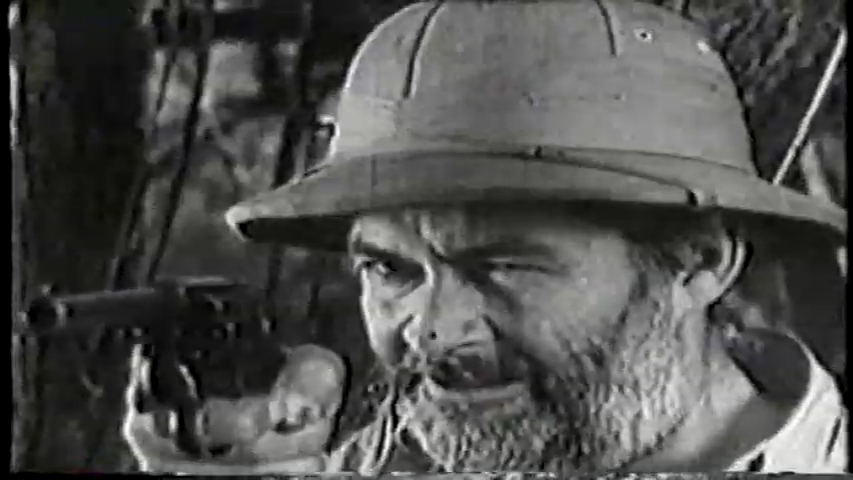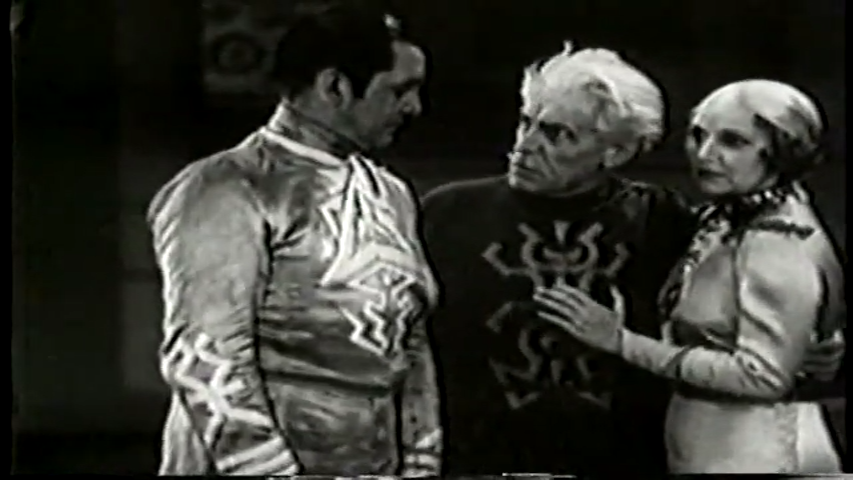-
#379 – Captain Video: Master of the Stratosphere (1951)
Captain Video: Master of the Stratosphere (1951)
Film review #379
Director: Spencer Gordon Bennet, Wallace A. Grissel
SYNOPSIS: The heroic Captain Video and his Video Rangers from across the globe help maintain peace on the planet Earth, but when Earth becomes subject to meteor bombardments from the planet Atoma, Captain Video must find a way to thwart the evil schemes of it’s leader Vultura before it is too late…
THOUGHTS/ANALYSIS: Captain Video: Master of the Stratosphere is a 1951 movie serial. The serial stars (as the title suggests) Captain Video, the leader of an organisation called the Video Rangers, who help protect the Earth. When the Earth becomes subject to meteor bombardments originating from the planet Atoma, Video must stop them before they can invade the Earth. The plot resembles the vast majority of sci-fi serials, which copy the highly successful Flash Gordon and caught the genre in a thinly-veiled repetition of its plot and characters for over twenty years. A lot of the story revolves around Captain Video trying to prove that the scientist Dr. Tobor (yes, that is ‘robot’ spelled backwards) is working with Atoma’s leader Vultura, as Video and Vultura try to outsmart and thwart the other’s plans. I think this format and plot structures were gotten away with for two reasons: one, there was no way to re-watch old serials once they had first aired at the theatre, so new ones could come out with the same story and similar characters; particularly since serials such as this would be aimed at kids, who would not have seen earlier serials. The second reason being that the second world war probably didn’t leave much room or money for the development of anything too original or ambitious, as resources would have been focused elsewhere. Nevertheless, by the time this serial was released in 1951, there probably should have been some effort to change the formula or offer something new.
Despite it’s lack of originality in the story department, there’s still a decent amount of variety going on. The early chapters see Video travelling to the planet Theros, where the peace-loving people are under attack by Vultura’s forces, and Video has to teach them to be guerrilla fighters and fight back. Again, this plot structure shows up in many previous serials. The next major chunk of the serial consists in the back-and-forth between Tobor and Video, as they try and outdo each other on Earth. Video and Vultura only meet in the final half of the last chapter, which feels like a waste. The serial however, does keep things interesting with a whole host of gadgets and inventions that would undoubtedly spark the imaginations of youngsters watching. The guns that the Rangers use that shoot out sparks are quite a nice effect of the time. However, the serial often falls into the trap of explaining what is going on and what all these inventions do rather than actually showing them, mostly due to budget constraints, but often the plot is explained before it happens, leaving little surprise or tension. The inventions too have bizarre technological names, and accompanied techno-babble that try to justify the implausible things they do.
Most of the characters are based off the ones on the TV series, with Captain Video being the typical white American male hero that is the star of all these serials. His younger sidekick is strangely only referred to as “the Ranger” and never given an actual name. This is in keeping with the TV series, but other rangers are shown to use their own names, so it’s odd that he doesn’t. Maybe it’s a way to get kids to imagine themselves in the role of the young teenage sidekick, as anyone could be “The Ranger”. There’s also Ranger Gallagher, who does all the technical stuff at Video headquarters, and Vultura clearly has some east Asian influences in his design, again echoing the “Ming the Merciless” type villain that originated in Flash Gordon. One final note about the characters is that while you will expect these serials to only feature a white cast, there is not a single woman anywhere featured in the serials fifteen chapters. Often there is usually a solitary token female character that sometimes serves as the protagonist’s love interest, but there is none at all here, not even in any of the backgrounds. I suppose the lack of a female character could be attributed to the fact this is geared towards a younger, male, audience, who would not be interested in a female character or a romance sub-plot, but having this cast of inter-changeable white men interact with each other really emphasises the monotony of the story at points.
The serial was directed by Spencer Bennet, a veteran of these kinds of serials, so he had plenty of experience in what to do. Some of the effects are fairly decent; as mentioned, the ray guns the Video Rangers use is pretty cool, and their super-fast car stands out with its unique look. There is also a ‘space platform’ which allows transportation between earth and Atoma, which apparently is millions of miles away. Captain Video also has a rocket ship he travels in, which again adds some variety. Some of the effects (such as the rocket ship in flight) are done through using hand-drawn animation, which allows a lot more freedom in terms of effects, although this is not the first time this was done, having been integrated into the Superman serial a few years earlier. Overall, I think I can place the Captain Video serial just above average in the miasma of similar sci-fi serials: it has a lot of the well-worn tropes and characters, but has some decent effects and various inventions that add a bit of extra spice. It’s obviously meant for a younger audience, but there’s enough content for those who haven’t seen such a serial before to enjoy.
-
#378 – Captain America: The Winter Soldier (2013)
Captain America: The Winter Soldier (2013)
Film review #378
Directors: Anthony Russo, Joe Russo
SYNOPSIS: When S.H.I.E.L.D. director Nick Fury is assassinated, Steve Rogers (Captain America) is on the trail of those responsible, but he is told to trust noone. As he investigates, he finds a shocking discovery that goes right to the heart of S.H.I.E.L.D. itself…
THOUGHTS/ANALYSIS: Captain America: The Winter Soldier is a 2013 superhero film that forms part of the Marvel Cinematic Universe (MCU). The film starts off with Captain America in the thick of a mission to rescue hostages from a S.H.I.E.L.D. ship. There’s plenty of fluid action that provides a strong opening for the film that requires no knowledge of the characters, and eases into the story in a fun and exciting way. The plot takes on a number of twists and turns as S.H.I.E.L.D. director Nick Fury is seemingly assassinated and Captain America must investigate S.H.I.E.L.D. itself with the help of Black Widow. The film mixes layers of action, espionage and intrigue as it unravels the conspiracy surrounding S.H.I.E.L.D. It’s a strong story that will keep viewers engaged, as well as exploring the character of Captain America and elements of the Marvel Cinematic Universe. It is a fine balance to give each of these elements the right amount of focus, but the film largely succeeds in doing so. If I were to pick an issue with the story, I would say that there’s a bit of a conflict between the film being self-contained and its part in the larger cinematic universe, insofar as the revelations about S.H.I.E.L.D. should have significant ramifications, but it seems they are more or less curtailed by the end in order to keep the film self-contained with a distinct resolution. Overall though, the story is fairly strong.
Captain America as a character is a soldier, a leader and a hero, and I think all of those aspects to him are given a good amount of development. How he relates to those around him and what his part is in protecting and inspiring them is something he has to constantly work through as the film progresses. The supporting cast of Black Widow and Nick Fury also get ample screen time in order to develop their characters and play a significant role in the story. The “winter soldier” also has ties to Captain America, and with everything else going on, it feels like there could have been more done with his character, but this instead seems to have been postponed in order to be dealt with in a sequel. Villains typically get short-changed in these films, as they are almost entirely self-contained in the film and do not get referenced outside of it. Pearce, the villain here, is a bit more interesting, and has particular relations with a number of characters. He doesn’t have any particular superpowers, so he’s more of a mastermind, with the winter soldier handling the action parts of the villainy. Sam Wilson, a veteran soldier, also has an interesting character arc which gives Captain America a bit of a grounding as he interacts with the soldiers without superpowers who go to war. A lot of characters, but again it’s all handled fairly well.
The style and effects in the film are just about what you would expect from these Marvel films. There are no surprises, but it has a good budget, and keeps things consistent. The fight scenes are well choreographed, and highlight the strengths of the characters. There’s nothing overwhelmingly special about the film, but it has a lot of content that pushes and develops characters in new directions and explores new facets of their characters. Like with most Marvel films it’s not going to re-define the genre, but it shows a marked improvement on earlier sequels in the MCU (Iron Man, Thor) by focusing a little more on interesting character development, varied villains and weaving a stronger story around the heroes.
-
#377 – Canadian Mounties vs. Atomic Invaders (1953)
Canadian Mounties vs. Atomic Invaders (1953)
Film review #377
Director: Franklin Adreon
SYNOPSIS: Canadian mountie Don Roberts is teamed up with intelligence operative Kay Conway to investigate reports of spies operating in the area attempting to set up covert missile bases in the Canadian wilderness. Don suspects two members of a group of settlers travelling across the wilderness are working for the spies, and so goes undercover in an attempt to expose them. Meanwhile, Beck and Reed, the spies lackeys, are secretly working to discourage the settlers from travelling to the site where Marloff, the foreign spy, wants to build his missile bases…
THOUGHTS/ANALYSIS: Canadian Mounties vs. Atomic Invaders is a 1953 serial. I think the title alone should grab anyone’s attention, so let’s see if there’s any substance underneath it…
Mountie Don Roberts is visited by his boss and intelligence operative Kay Conway to investigate the presence of foreign spies in the area. They believe that some of the settlers moving through the town are working for the spies, and so Don goes undercover with them to try and uncover their identity and motives. The first part of the serial sees Don travelling through the wilderness with these settlers as he tries to foil the spies schemes. This leads a variety of associated perils such as avalanches, dog-sled chases and other such perils of the wilderness. These sorts of sequences you don’t see too often in these serials of the time, so it is something a little different. The main plot of the serial though is nothing too special, with a constant back-and-forth chase between the heroes and villains. The “atomic invaders” are just plain foreign spies and also not very interesting. In 1953, these kinds of serials were dwindling in number as studios turned towards the feature film (and the b-movie), and the introduction of television would mean that these serials would be viewed at home each week rather than getting people to go to the theatre. With that in mind, the chapters are all (with the exception of the first one) just over thirteen minutes long, which seems a waste of effort going to see such a short film. I suppose a positive of this is that the chapters aren’t drawn out with pointless dialogue and scenes that go nowhere…but that said, there is still plenty of it to fill out the time…
After Don foils Marloff’s (the foreign spy) plans to stop the settlers, the spy changes the location of his proposed missile sites which will destroy the U.S. cities to allow his country to invade with little resistance. This “foreign country” is never mentioned by name, but since the cold war was beginning to get underway at the time, I think it’s fairly obvious which country they are referring to. The rest of the serial involves a more usual set-up of fistfights, car chases and cliff hangers that will be familiar to serial watchers. Again, at this time, the format really had been exhausted, and it can offer no real surprises or originality. Some serials hide the identity of the villain until the very end so as to maintain a sense of intrigue throughout, but this serial does not. It might have been a good idea to keep the identity of Smokey, a village resident who is Marloff in disguise, a secret until the end. Instead, it reveals it almost instantly, and the conflict between the heroes and villains really lacks any dynamic.
Given that the film has a variety of scenes in different locations, there is a lot of stock footage used and shots in the wilderness are cobbled together in a studio with painted backgrounds that look rather unconvincing. The chase scenes in cars and boats look alright, and the explosive cliffhangers have an impact, but the format leaves every twist in the story all too predictable, and despite the bizarre title, Canadian Mounties vs. Atomic Invaders fails to contribute anything unique to a formulaic format.
-
#376 – The Mad Monster (1942)
The Mad Monster (1942)
Film review #376
Director: Sam Newfield
SYNOPSIS: Dr. Cameron, a scientist, has been experimenting with genetic modification, a practice which has left him the subject of ridicule and forces him from his university job. Out in the country, he experiments on his hired help Pedro to turn him into a werewolf, but when Pedro starts killing people in his werewolf form, Dr. Cameron finds it increasingly difficult to keep his experiments a secret…
THOUGHTS/ANALYSIS: The Mad Monster is a 1942 horror/sci-fi film. The film centres around Dr. Cameron, a scientist whose experiments in genetic engineering have left him ridiculed and cast out of the scientific community. He moves out into the country with his daughter Lenora to carry on his experiments, using his hired help Pedro as a test subject. Cameron successfully develops a serum that can turn Pedro into a werewolf-like creature, which ends up escaping and killing a little girl. Pedro is unable to remember the time when he is transformed, so Cameron uses this to his advantage to take revenge on those that ridiculed his research. The story is quite straightforward, and there’s no real surprises. The plot is all explained at the beginning, and it is up to the characters to unravel the mystery themselves. there’s nothing really special about the film, it’s another simple story of science going too far that has been done many times before (and after).
The film attempts to create a horror atmosphere through some creative use of lighting and dark, minimal sets. Although all the violence happens off-screen (this is the 1940′s after all), so it is difficult to get much of an idea of how vicious this werewolf creature is. The cast of characters is pretty bland, but well defined, and everyone contributes to the story in some way. The acting and delivery of lines is sometimes a bit flat, but credit to the actor playing Pedro, who gives an expressive performance. One of the biggest drawbacks of the film is that it often feels boring, with scenes that drag on too long consisting of dull conversations that go nowhere. You become very aware of the beginning and ending of scenes as they mostly end on flat notes without much fanfare, leaving you to wonder what the point of it was.
As mentioned, the production values of the film are rather low, owing to the general state of the world at the time and having more pressing issues to address. Nevertheless, there are a few positives, such as Pedro’s “werewolf” make-up or costume being quite well put together. Sometimes Dr. Cameron delivers a good speech under an atmospheric light, but other than that there’s really not much else that stands out. The Mad Monster is an entirely forgettable film with a typical message of science going too far, and a blandness in terms of its looks and its dialogue leave little to recommend it.
-
#375 – The Lost City (1935)
The Lost City (1935)
Film review #375
Director: Harry Revier
SYNOPSIS: Extreme weather is causing mass destruction across the Earth, with seemingly no known explanation. Electrical engineer Bruce Gordon manages to use one of his machines to trace the source of these disturbances to an unexplored region of central Africa. He leads an expedition to the area to investigate and ends up discovering a lost city ruled by a madman who is intent on attaining absolute power from his machines. Bruce must join forces with the various people in the region, and stop the evil Zolok from using his machines before the world is destroyed…
THOUGHTS/ANALYSIS: The Lost City is a 1935 science-fiction, twelve part film serial. in the opening, we see storms ravaging the cities of the world, causing mass destruction. The world is unable to find the cause of these freak weather events, until electrical engineer Bruce Gordon uses one of his inventions to locate the source in an unexplored region of central Africa. Bruce leads an expedition to the area withe his friend Jerry Delaney, and when he arrives at a trading post, a man named Butterfield stumbles in injured, telling of a lost city beneath Magnetic Mountain guarded by giants. Believing there is a connection between Magnetic Mountain and the storms, Bruce investigates and finds the lost city is real. There, a man named Zolok is forcing Manyus, a scientist, to construct inventions which he believes will help him rule the world. The opening chapter of the serial is typically full of exciting effects and setting the stage for a thrilling adventure. As I’ve mentioned before in other serial reviews, the opening chapter is often the most thrilling and interesting, as it is meant to entice viewers to return to the theatre every week to watch the subsequent parts. These serials can quite quickly run out of steam, as they are made on a low budget and there is a lot of re-used settings and back-and-forths between the heroes and villains that can get repetitive. With The Lost City though, this repetition is kept to a minimum as there’s a number of distinct locations, and a large cast that gets introduced as the story goes on, so these new elements continually change the dynamic of the plot. Of course, there’s also plenty of daring cliffhangers at the end of each chapter, with lion pens, giant spiders and all sorts of devious traps that will encourage viewers to return next week. The overall story is definitely stronger than many similar serials I have seen.
As I mentioned, the cast is fairly large, and are somewhat diverse. The “giants” are pretty cool, and have a menacing presence. The big problem here though, with the film being set in central Africa, is the film’s depiction of non-white races. The “native tribes” are portrayed as very typical, primitive people as very much stereotypes of what western countries at the time were taught Africa to be. The fact that the film does not further pinpoint the location other than “Africa” again shows how the entire continent is ill-defined by said countries. When the “Arabs” shows up around half-way through the serial, they again are portrayed in a stereotypical fashion. Both of these groups, when they are supposedly speaking in their own language, is clearly just gibberish being shouted by the actors, which again just reinforces the dismissive attitude to non-white cultures. i think the main villain is designed to be similar to an east Asian person as well, just to round off the serial’s inclusion of all races. The portrayal of the black giants is clearly meant to make them as menacing as possible too. On top of all this, there is a plot element that Manyus has invented a medicine that can turn black people white. While the film does not label this as a “cure” for being black, it does feel that way at points, and really just compounds the fact that this film is horrifically outdated, and racially dismissive/ignorant.
The Lost City really shines through in terms of its story, and it paces itself well throughout the twelve chapters by continually introducing new characters and dangers in order to keep things fresh. In this respect, it avoids one of the significant problems that plague the serial format. However, it’s depiction of non-white races is horrifically ignorant and outdated, and really is non-redeemable. Yes, it is a product of it’s time, but I do not feel that it is enough of an excuse to dismiss its harmful racial depictions.

